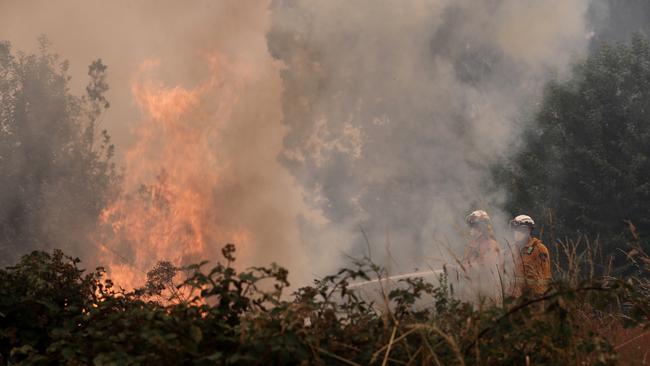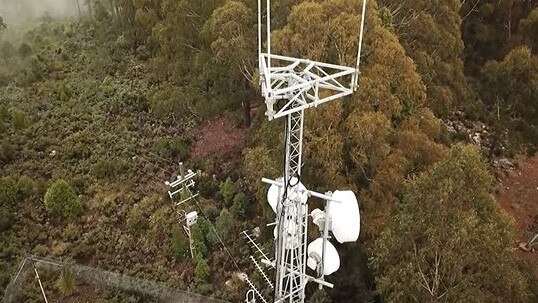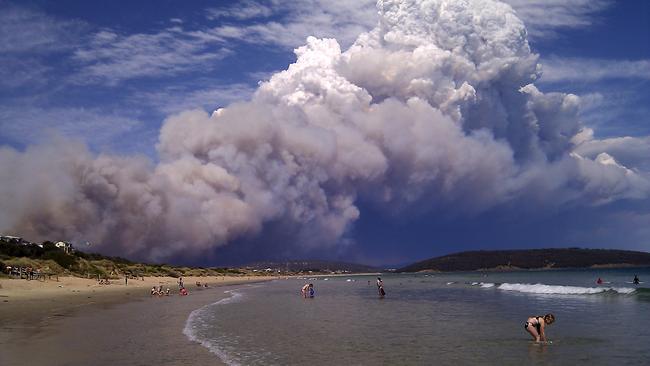Tasmanian government snubs federal government assistance on disaster responses
The Tasmanian government has snubbed federal interference when it comes to disasters such as bushfires, as sweeping upgrades are put in place for the state’s emergency radio network. LATEST >>
Tasmania
Don't miss out on the headlines from Tasmania. Followed categories will be added to My News.
THE Tasmanian government has opposed a federal government bid to be able to unilaterally intervene in local emergencies.
The state government has released its response to the Royal Commission into National Natural Disaster Arrangements.
Acting Premier Jeremy Rockliff said state authorities supported in full or in principle all of the recommendations bar two.
The first, was a recommendation that the federal government be able to declare a state of national emergency and take action without a state or territory request for assistance in clearly defined and limited circumstances.
But the state rejects that idea.
“Tasmania supports arrangements for the Australian government to be able to declare a national disaster and to quickly support states and territories to respond to natural disasters, provided it is done in consultation with states and territories,” the response said.

“Tasmania, however, does not support the Australian government having the power to take action without the agreement of states and territories.”
And the state government also objected to taking responsibility for local government functions during natural disasters.
Mr Rockliff said that while Tasmania was not affected by last summer’s disastrous east coast bushfires, it remained one of the most bushfire-prone places on Earth.
Mr Rockliff said the Tasmanian government supported most of the royal commission’s recommendations but drew the line at the plan to override the states.
The government has recently released the draft Bushfire Mitigation Measures Bill for consultation. He said the initiative would supplement our nation-leading fuel-reduction program, to make it easier for landholders to reduce fuel loads while balancing environmental and community concerns.
Mr Rockliff said the state budget included $17.6m in bushfire mitigation and a fire service support package and has initiated a $100,000 pilot grant program to work with the Aboriginal community to draw on their expertise in fuel reduction through cultural burning.
He said it was accompanied by action to address climate change.
State says no to unilateral federal response to disasters
Tim Martain
TASMANIA’S emergency services radio network is set for a major upgrade, seven years after recommendations were made in the wake of the 2013 bushfires.
Construction of the new Tasmanian Government Radio Network (TasGRN) will commence next year with the first emergency service agencies, Tasmania Police and TasNetworks, switching to the new system in late 2022, the rest following in 2023.
The contract for the $567m project was awarded to Telstra, who will be supported by Motorola Solutions in the construction, management and operation of the network of 138 transmitter sites.

Acting Premier Jeremy Rockliff said it was the most significant multi-agency radio communications upgrade in the state’s history.
“Effective radio communications are mission critical to keeping Tasmanians safe and having such extensive infrastructure across multiple agencies is critical,” he said.
“It is important that all agencies are working through one combined network to ensure the responsiveness of those on the front line protecting Tasmanians.”
TasGRN will replace the five separate radio networks currently being used by government agencies – including police, fire, TasNetworks and forestry – with a single digital, public-safety-grade radio network, allowing all agencies to communicate directly with one another.
The aim is to avoid slow communication problems created by agencies like police operating on the UHB band while fire use the VHF band, which means an additional layer of relaying messages between the two.

The new network will also be end-to-end encrypted, for greater security of communications, and to prevent people from using police scanners to listen in on radio communications.
Following the devastating bushfires that raged through Tasmania from November 2012 to April 2013, a government inquiry was held in October 2013, which found serious flaws in the handling of the crisis, partly caused by inadequate communication networks.
The TasGRN upgrade has been designed to address those concerns and Police, Fire and Emergency Management Minister Mark Shelton defended the seven year period of planning it took to get the upgrade underway.
“It is quite complex and a significant amount of money was needed so we’ve been looking at it over a period of time and determining best way to go about this,” he said.
“There are five separate networks, eight agencies that need to come on board … it has to be done right.”
Following a three-year construction period, the contract allows for a 12-year operation period.



